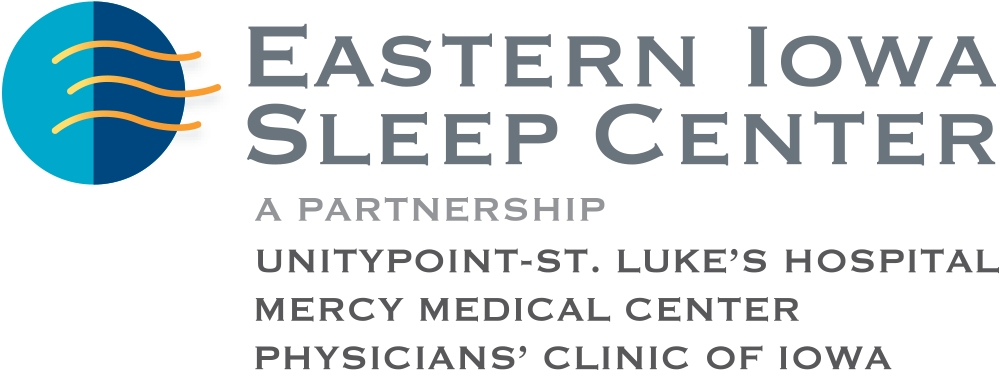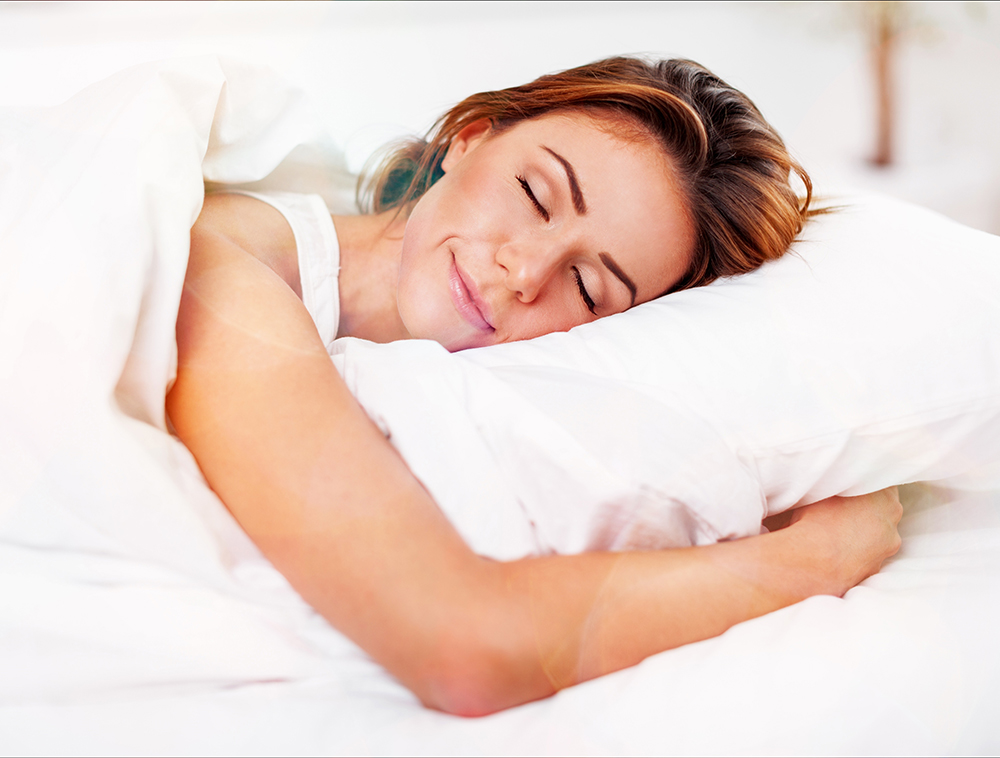In-Lab Sleep Study
The gold standard for detecting a sleep disorder is the In-Lab Sleep Study, also called a polysomnogram. Your In-Lab Sleep Study provides the diagnostic information that will help your sleep technician, your sleep medicine physician, and your primary health care provider identify the cause of your sleep problem(s).
How It Works & What to Expect
Why a sleep study?
- To identify sleep-related breathing disorders such as sleep apnea.
- To identify narcolepsy.
- To identify sleep behaviors that could be harmful to the patient or others.
- To set correct levels of CPAP (continuous positive airway pressure).
- If the patient has been treated for a sleep disorder but symptoms are not improving.
Why do I need to see my doctor first?
The Eastern Iowa Sleep Center is an Independent Testing Facility (IDTF) that is governed by standards which only allow testing to be scheduled after receiving a referral from your physician or a sleep medicine physician. This allows for evaluation of your health to determine if a sleep study is right for you.
What to Expect
The Sleep Study is painless, no needles or injections. You are in a private room. Electrodes are gently pasted to your scalp, face and legs along with other sensors attached to your body. During sleep, your brainwave patterns, heart rate, breathing, oxygen, and leg movements are recorded.
- You will be able to move around in bed.
- You and your technician can communicate by intercom.
- A technician can disconnect the sensors if you need to use the bathroom.
- You are free to read or watch TV until the Sleep Technician says “good night.”
- An infrared light and camera in your room allows the technician to monitor your study without interruption.
Your technician will awaken you at the conclusion of the study which is typically 5:30 a.m. You may leave at that time.
Before Your Sleep Study
- Schedule transportation to and from your study if you have been prescribed a sleep aid and are not sure of its effects.
- Complete all the Sleep Study Questionnaires sent to you online or mailed to you.
- Bathe, wash and dry your hair; do not use gel or conditioners. If your hair is tightly braided to the scalp it may need to be undone for application of the electrodes.
- Avoid napping and caffeine on the day of your study.
- Continue to take your normal daily medications, unless otherwise directed by your physician.
- Allow at least one finger to be void of special nail applications for the pulse oximeter to work properly.
- You may otherwise go about your normal daily routine.
What to Bring With You
- Photo identification.
- Insurance card(s) and co-pay.
- Completed registration forms and questionnaires.
- Sleep medication prescribed per your doctor or over-the-counter.
- Current medication list and the prescription medications you take before bed in their original containers. If diabetic please bring any snack you need.
- Pajamas or top & bottom sleep clothes. Women may wear a bra underneath.
- Toothbrush & paste, soap, shampoo and any other toiletries you may need after the study and a change of clothes if needed.
After Your In-Lab Sleep Study
- If you do not drive, arrange for someone to pick you up by 5:30 a.m.
- If you are too sleepy to drive, please let the technician know.
- You may have minor skin irritation from the electrodes and adhesive; if you have other concerns, please let us know.
Receiving Your Results
- A follow up visit is needed with the provider that referred you to EISC.
- If you do not have a follow up visit scheduled, please contact that provider’s office.
- We send a completed Report to your referring provider.
- If you have not heard from your provider within 10 business days, please let us know.
- Your referring provider will review the study with you for treatment options.
Treatment Options
The treatment that is right for you depends on many different factors. You can discuss which treatment is best with your health care provider. Some of the options include:
Positive airway pressure (PAP) therapy
- Continuous positive airway pressure (CPAP): This device delivers a constant level of air pressure throughout the night. The level of pressure is determined by your health care provider.
- Automatic positive airway pressure (APAP): This device automatically raises or lowers the air pressure as needed throughout the night. The level of pressure is determined by your health care provider.
- Bilevel positive airway pressure (BPAP): This device has two levels of pressure – a higher level when you breathe in, and a lower level when you breathe out. The level of pressure is determined by your health care provider.
Lifestyle changes
- Losing weight
- Quitting smoking
- Avoiding alcohol and sedatives
- Sleeping on your side or stomach
Oral appliances
- Fit over the teeth and worn during sleep
Surgery
- Reduction of throat tissue
- Removal of tonsils and adenoids
- Weight loss surgery
- Inspire implant device
Questions?
Contact us today to learn how we can help you sleep

275 10th St. SE
Suite 3330
Cedar Rapids, IA 52403
Phone: (319) 362-4433
Phone: (877) 361-4433
Fax: (319) 362-4466



